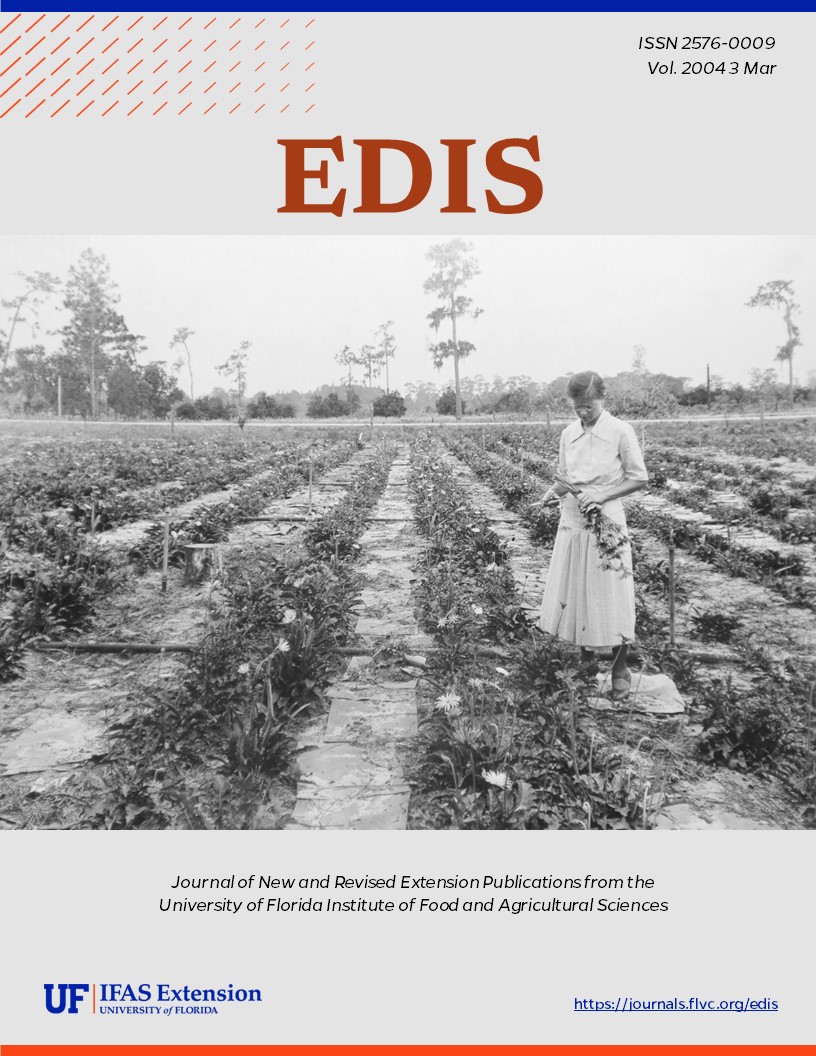Abstract
Under certain conditions, vegetable greenhouse crops can develop physiological disorders that predispose plants to diseases that decrease plant growth, fruit yield, and fruit quality. One plant disorder in bell pepper (Capsicum annuum L.) is the “Elephant's Foot,” which is characterized by the presence of epidermal injuries on a swollen stem region developed at the base of the plant stem. The epidermal injuries increase the plant susceptibility to fungal infections that can lead to plant death. This publication describes the symptoms and possible causes of this basal stem physiological disorder in greenhouse-grown bell pepper, and presents pepper production methods to avoid the disorder. This document is HS959, one of a series of the Horticultural Sciences Department, Florida Cooperative Extension Service, Institute of Food and Agricultural Sciences, University of Florida. Publication date: January 2004.
References
Jovicich, E., D.J. Cantliffe, and G.J. Hochmuth. 1999. "Elephant's Foot," a Plant Disorder in Hydroponic Greenhouse Sweet Pepper. Proc. Fla. Soc. Hort. Sci. 112:310-312.
Jovicich, E. and D.J. Cantliffe. 2004. Salts Deposited on the Lower Stem of Bell Pepper Contribute to a Basal Stem Disorder in Soilless, Greenhouse-grown Plants. HortScience 39(1) (in press). https://doi.org/10.21273/HORTSCI.39.1.36
Unless otherwise specified, articles published in the EDIS journal after January 1, 2024 are licensed under a Creative Commons Attribution-NonCommercial-NoDerivs 4.0 International (CC BY-NC-ND 4.0) license.

